ASM Metals HandBook Vol. 17 - Nondestructive Evaluation and Quality Control
Подождите немного. Документ загружается.

Ultrasound Transmission in Green Compacts. The characterization of green compacts by ultrasonic techniques
appears to be hindered by problems of extreme attenuation of the incident signal. In one case, signals of 1 to 20 MHz
were transmitted through an 8 mm (0.3 in.) thick compact of atomized iron with 0.2% graphite added (Ref 11). Although
the attenuation did not allow back-wall echo measurement, through-transmission measurements indicated that the
transmitted intensity had a maximum at 4 to 5 MHz (Fig. 8). Density was found to influence the transmitted intensity,
with specimens at 95% relative density allowing some degree of transmission over the entire range of frequencies tested,
while specimens at 87% relative density damped the incident signals entirely.
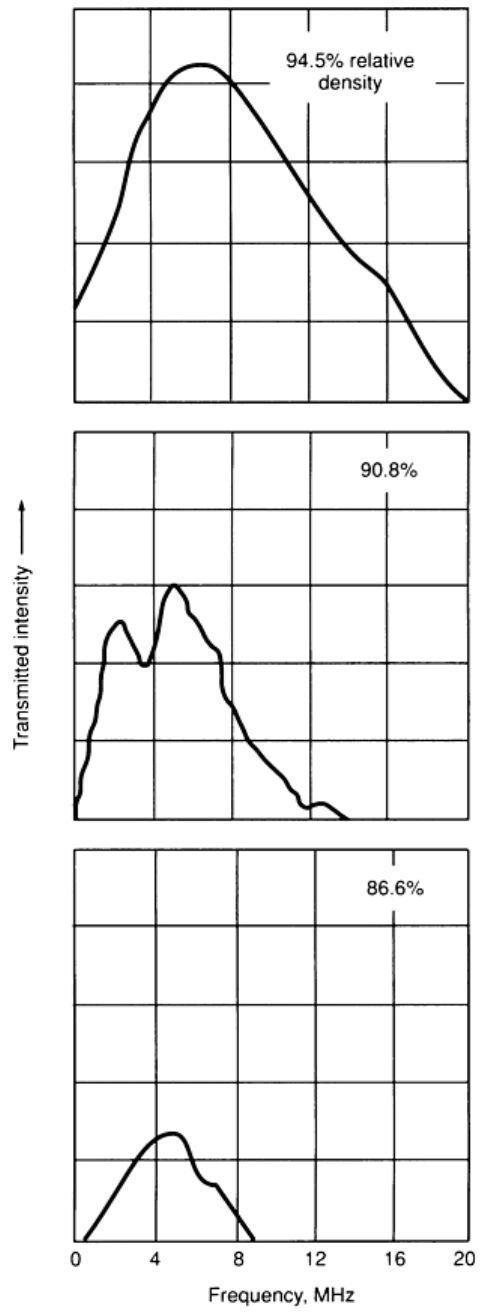
Fig. 8
Ultrasonic spectrum analyzer output showing change in transmitted intensity with density of green
compact. Source: Ref 11
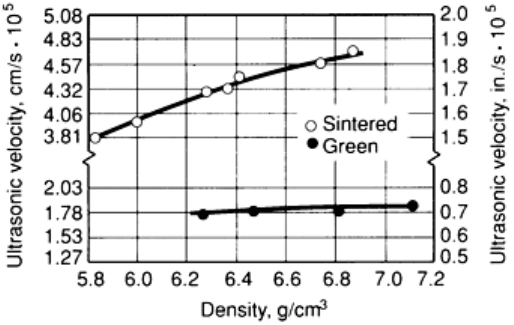
Figure 9 shows that the velocity of ultrasonic waves in green compacts is about half the velocity in sintered compacts and
that it is essentially invariant with density (Ref 13). It has also been shown that the velocity of ultrasound in green parts is
highly anisotropic and that the experimental reproducibility is very poor (Fig. 10). It has been proposed that the
anisotropy in velocity is due to the orientation of porosity (Ref 15).
Fig. 9 Effect of density on ultrasonic velocity in green and sintered cylindrical Ancorsteel 1000-
B specimens.
Source: Ref 12
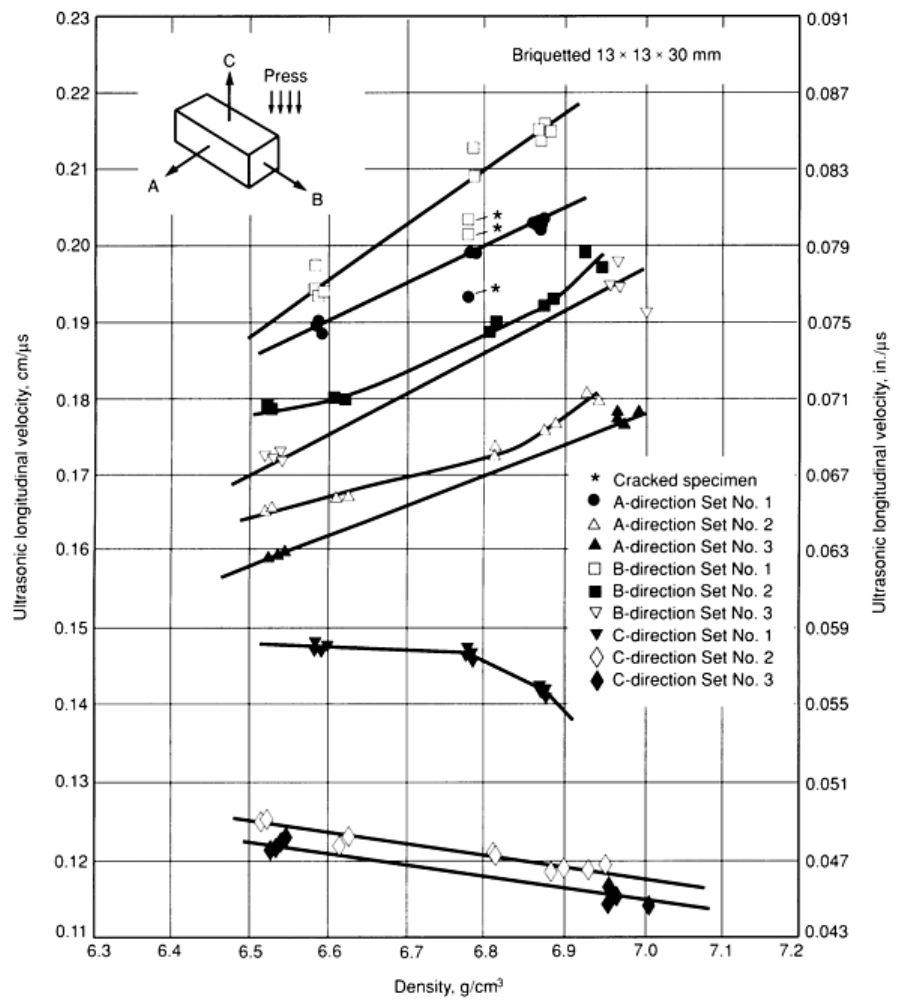
Fig. 10 Anisotropy of ultrasound in green transverse rupture strength bars. Source: Ref 14
The variation in the velocity of ultrasound with applied pressure during the compaction of ceramic powders has been
measured in situ by fixing transducers to the ends of the punches (Ref 16). Unlike the case of finished green P/M
compacts, a clear relationship was found between longitudinal wave velocity and compacting pressure (Fig. 11), probably
because the constraint of the punches and die forced the individual particles together, providing an efficient acoustic
coupling between particles.
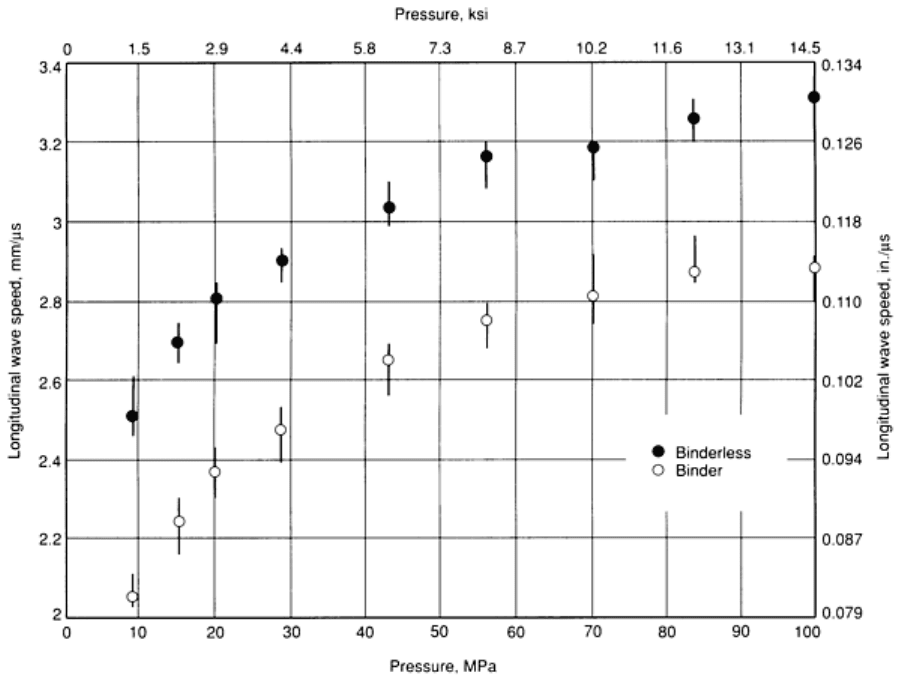
Fig. 11 Ultrasonic wave velocity in ceramic powders, measured during compaction. Source: Ref 16
Ultrasound Transmission in Sintered Parts. Early work relating the physical properties of cast iron to the velocity
of sound waves suggested the potential for evaluating P/M steels in the same way (Ref 17). As expected, both the velocity
of sound in P/M parts and their resonant frequencies have been related to density, yield strength, and tensile strength.
Plain carbon steel P/M specimens were used in one series of tests and the correlation was found to be close enough for the
test to be used as a quick check for the degree of sintering in production P/M parts (Ref 12). Other work has demonstrated
the relationship between sound velocity and tensile strength in porous parts (Fig. 12). The same types of relationships
have also been documented in powder forgings Ref 19.

Fig. 12 Correlation of ultrasonic velocity with tensile strength of sintered steel. Source: Ref 18
Sintered parts have been found to transmit ultrasound according to the relationships shown in Fig. 13. The highest wave
velocities occurred in the pressing direction. An additional distinction was found between the velocities in the
longitudinal and lateral axes of an oblong specimen, and these results were shown to be reproducible between different
powder lots and specimen groups. The anisotropy of velocity diminished at higher densities and disappeared above 6.85
g/cm
3
.
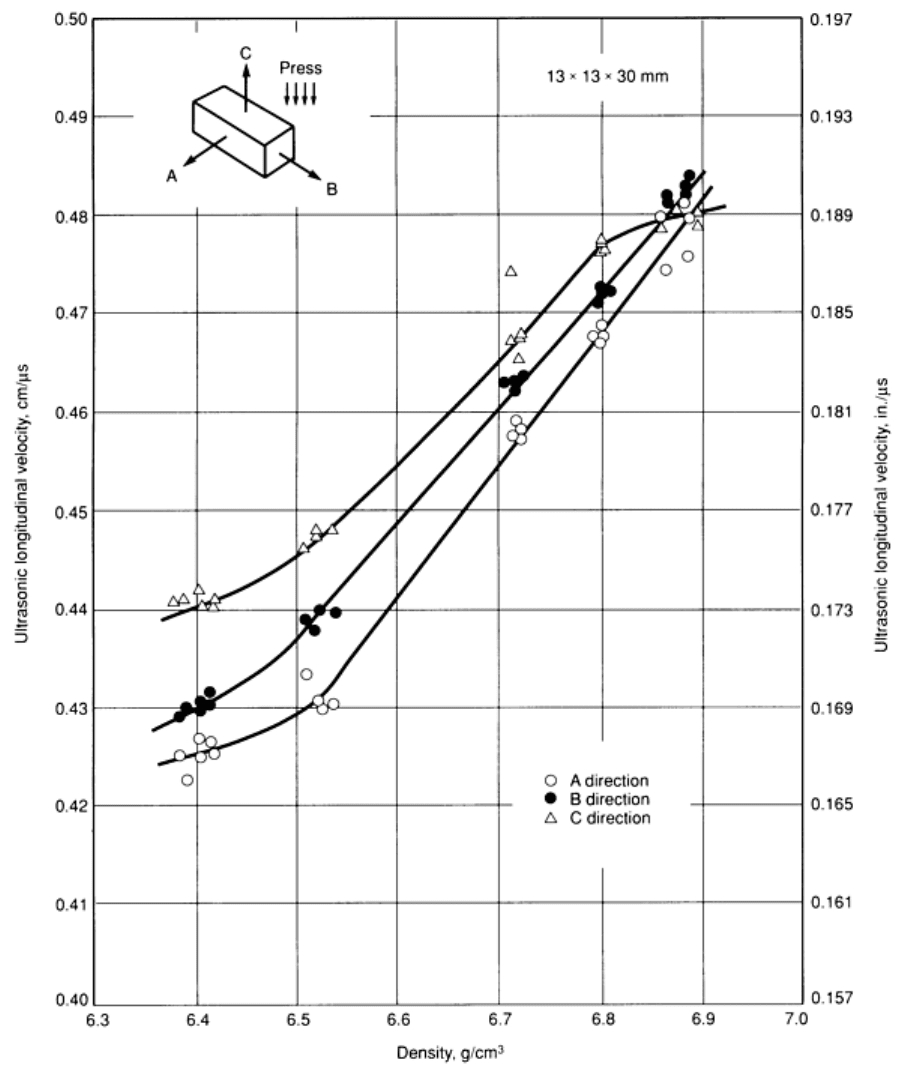
Fig. 13 Anisotropy of ultrasound velocity in sintered transverse rupture strength bars. Source: Ref 14
Ultrasonic Imaging: C-Scan. The C-Scan is a form of ultrasonic testing in which the testpiece is traversed by the
ultrasound transducer in a computer-controlled scan protocol (Fig. 14). The transmitted intensity is recorded and analyzed
by computer, and a gray-mapped image is output.
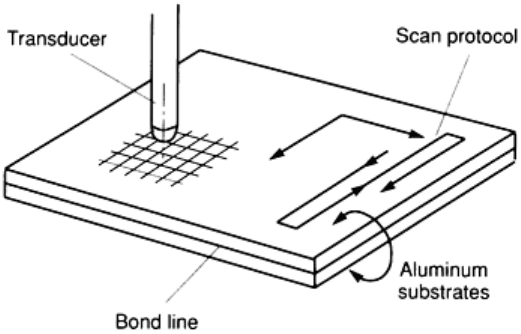
Fig. 14 Schematic of a C-Scan scanning protocol for an adhesive-bonded structure. Source: Ref 20
In one trial, seeded oxide inclusions were detected in porous sintered steels using a C-Scan (Ref 21). The inclusions
consisted of admixed particles of chromium oxide and alumina at concentrations of 65 to 120 particles per square
centimeter. Inclusions as small as 50 μm in diameter were detected. Additional information on the C-Scan can be found in
the articles "Ultrasonic Inspection" and "Adhesive-Bonded Joints" in this Volume.
Ultrasonic Imaging: Scanning Acoustic Microscopy (SAM). Ultrasonic waves can be focused on a point using a
transducer and lens assembly, as shown in Fig. 15 and described in the article "Acoustic Microscopy" in this Volume. In
this way, the volume of the specimen being examined is highly limited, so that reflections from defects can be closely
located at a given depth and position in the specimen. In SAM, the specimen is moved by stepper motors in a raster
pattern, and an image of the entire structure can be built up. Scanning acoustic microscopy has been shown to be capable
of resolving small surface and subsurface cracks, inclusions, and porosity in sintered, fully dense ceramics (Ref 22).
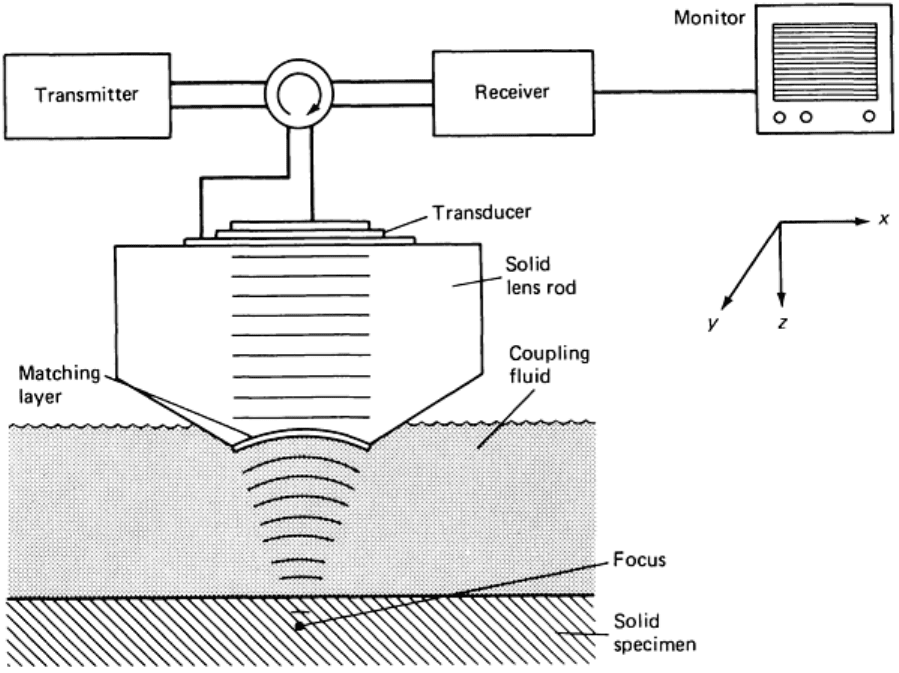
Fig. 15 Schematic of the image-forming process in scanning acoustic reflecting microscopy. Source: Ref 22
Ultrasonic Imaging: Scanning Laser Acoustic Microscopy (SLAM). When a continuous plane wave impinges
on a sample that is roughly flat in shape, it propagates through and is emitted from the sample with relatively little
scattering, retaining its planar nature. When the plane wave is emitted from the sample, it contains information on
variations in properties that were encountered in the interior of the sample, which takes the form of variations in intensity
with position in the plane. A scanning laser acoustic microscope detects these variations as distortions in a plastic sheet
that is placed in the path of the plane wave. The information is gathered by a laser that scans a reflective coating on one
side of the sheet, as shown in Fig. 16 and explained in the article "Acoustic Microscopy" in this Volume.
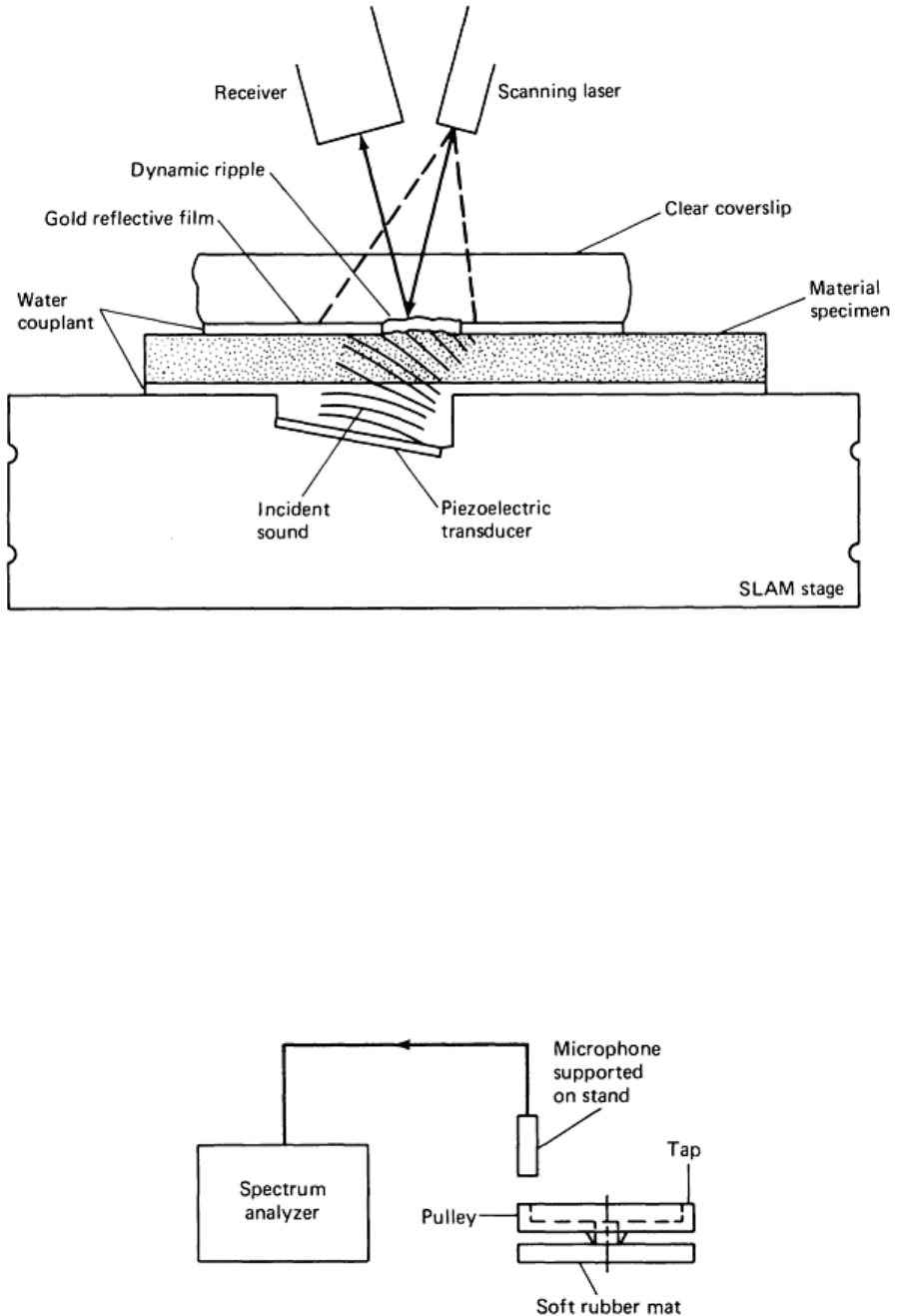
Fig. 16 General configuration used in scanning laser acoustic microscopy. Source: Ref 23
Therefore, although ultrasonic testing is not appropriate for evaluating green P/M parts, it is applicable to the assessment
of sintered components. Optimum results dictate careful selection and placement of the transducers because the
orientation of the defects influences the ability to detect them. Small defects close to the specimen surface can be masked
by surface echoes. Although enhanced image analysis techniques appear beneficial, it is unlikely that the more
sophisticated techniques, such as C-Scan and SLAM, will be cost effective for most ferrous P/M parts in the near future.
Resonance Testing. When a structural part is tapped lightly, it responds by vibrating at its natural frequency until the
sound is damped. Both the damping characteristics and the natural frequency change with damage to the structure.
Changes in the natural frequency can be detected with a spectrum analyzer, as shown in Fig. 17.
Fig. 17 Schematic of resonance test configuration. Source: Ref 24
